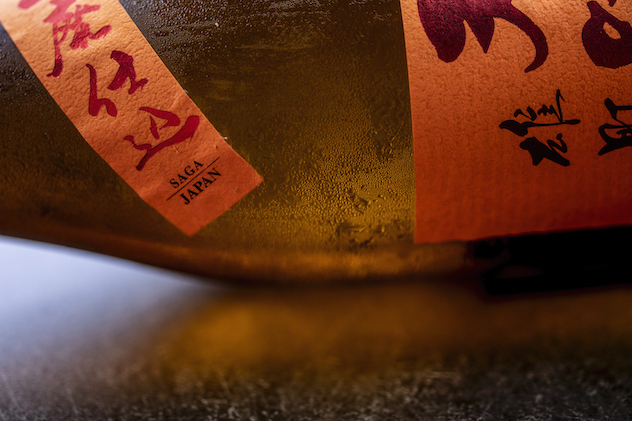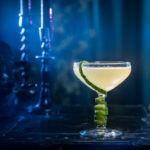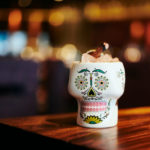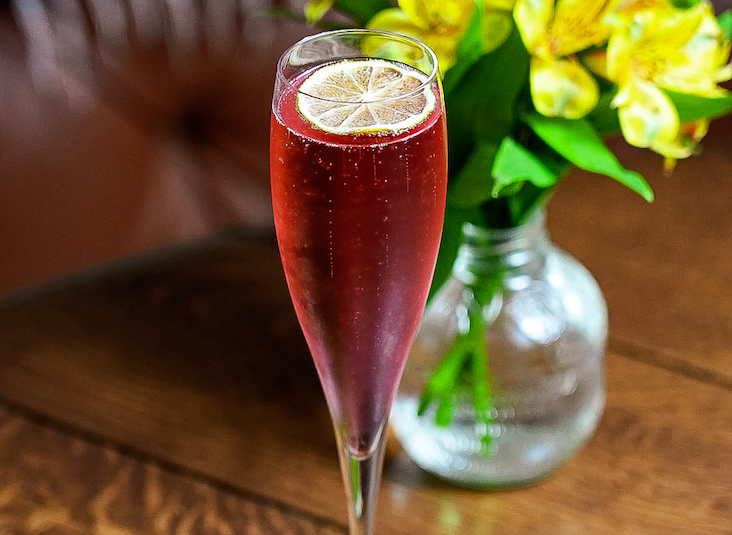Talk about bad timing. Mujō was scheduled to open as a pop-up sushi restaurant in Atlanta this past March—just as the coronavirus outbreak was shutting down on-premise service in most markets. So parent company Castellucci Hospitality Group (CHG) pivoted to a to-go only, pop-up model that opened in late May.
Despite the switch in format, Executive Chef J. Trent Harris prioritized creating an elevated, omakase-level sushi and sake program for Mujō. He wanted to replicate a signature experience for guests at home.
That’s something generally not seen in to-go concepts and not easy to execute. It’s helped make the pop-up so successful that CHG plans to convert Mujō into a permanent restaurant.
To-Going Concern
The idea for Mujō started a few years ago over an omakase sushi dinner that Harris prepared for Fred Castellucci, president of CHG, and his wife, Lauren, at Shuko restaurant in New York. They connected over the idea that omakase—a dining experience curated entirely by the sushi chef—could be less pretentious and driven by hospitality.
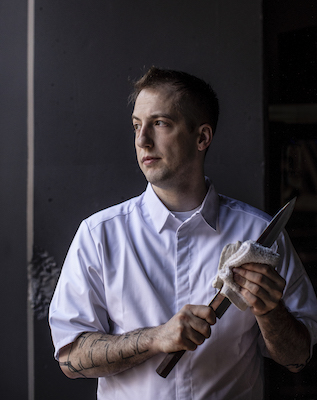
Plans gelled to test the concept with a pop-up in spring 2020, and Harris agreed to come to Atlanta to launch it. Then COVID-19 abruptly put the brakes on the restaurant for dine-in. So they moved to a to-go format, operating out of one of Castellucci’s existing Atlanta restaurants, Cooks & Soldiers.
Mujō specializes in modern, Edomae-style sushi and small plates. How do you replicate the omakase experience in a to-go format?
“We try to add some personalized touches to each order, as well as provide some info to guide the experience for the guest,” says Harris, who officially relocated to Atlanta in August.
For instance, artful plating, bamboo packaging and attention to detail such as mini squeeze bottles of soy sauce (with a matching sauce dish) help set the stage for a special meal to be enjoyed at home. “While we can’t be there in person yet, we want them to feel our personality come across through the care we put into each order,” Harris notes.
Sake Sensations
In addition to his Japanese culinary training and industry experience at Shuko and Sushi Ginza Onodera in New York, Harris has a yen for sake. He introduced a curated selection of sake varieties for Mujō’s menu to bookend the omakase offering for guests at home.
Are there general guidelines for pairing sake with food? A good rule of thumb is just to keep balance in mind, Harris says. “Rich foods with richer sake, vinegared foods need a more acidic sake, sweeter dishes need a sweeter sake, etc.”
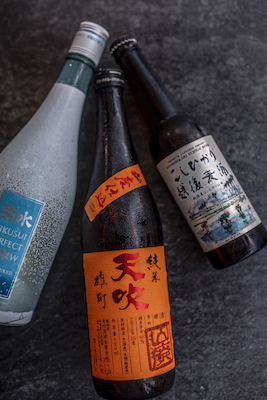
Sake doesn’t compete with the food, he notes, “Instead, sake works to enhance flavors and textures. Ultimately, there are no absolute rules: You should drink whatever sake you enjoy.”
Mujō also carries a curated selection of wines and Japanese beers, including Echigo koshihikari rice lager, priced at $7 for a 12-oz. bottle; Hitachino Nest Beer ($8 for an 11.2-oz. bottle); and Ginga Kogen ($9 for a 300-ml. bottle). The wines available range in price from $40 for a 2018 Gaintza Getatiako Txakolina from Spain to $180 for a bottle of 2017 Beaux Frères pinot noir from Oregon’s Willamette Valley, as well as two Spanish cavas priced at $65 and $70.
One thing you probably won’t find on Mujō’s menu: sake cocktails. “I’m not a believer in sake cocktails personally,” Harris says. “I think a stronger spirit such as shochu is more suited to cocktails. The nuance of sake would be lost in a cocktail, much like a fine wine.”
That said, he admits, “I do enjoy a spritzer made with Kikusui Perfect Snow Nigori,” an unfiltered, high-alcohol sake.
Mujō Sake Selections
Here are a few of Harris’s sake selections, with tasting notes, featured on the Mujō menu.
Nanbu Bijin “Tokubetsu Junmai” ($25 for a 300-ml. bottle). Tokubetsu Junmai is made with local Iwate Ginotome sake rice, milled down to 55%, which is actually junmai ginjo quality. Farm fresh, juicy orange flavor.
Amabuki Shuzo Yamahai Junmai ($45 for a 720-ml. bottle). This yamahai is juicy and acidic with a hint of mint. Made with marigold yeast, the nose is fruity and floral, and the hue is slightly golden. A golden or yellow color is often a characteristic of yamahai style sakes because they are aged for at least two years. This can affect the color of the sake, which could range from clear to light gold. Excellent chilled or at room temperature.
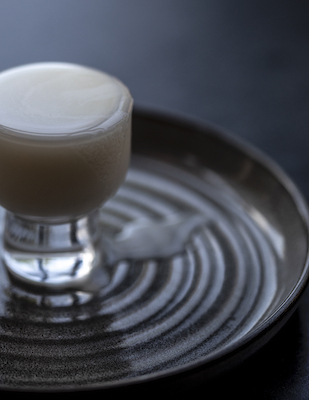
Kikusui Shuzo, Nigorizake “Perfect Snow” ($40 for a 720-ml. bottle). This is Japan’s #1 selling nigorizake—it’s rich, sweet and high-alcohol content, with tropical notes of banana and coconut. It’s a full-bodied sweet nigori genshu and is undiluted; it has 21% ABV and chewable grains of rice from traditional brewing methods. Can be served chilled, on the rocks or with soda.
Ryujin Shuzo Oze no Yukidoke Junmai Daiginjo ($90 for a 720-ml. bottle). Semi-sweet and rich, with an enticing and elegant aroma that refreshes and cleanses the senses. Splendidly balanced with floral and grain notes.

